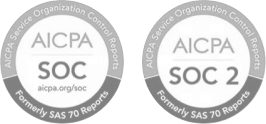Employer Payment Summary
Article Navigation
An Employer Payment Summary is a report sent by UK employers to HMRC as part of the Real Time Information system. Unlike the Full Payment Submission, which details pay and tax for employees, the EPS is used to inform HMRC of adjustments or changes to payments due. It is commonly submitted monthly but can also be required annually in certain cases.
Real Time Information System
The Real Time Information system is HMRC’s payroll reporting framework that requires employers to submit information about employees’ pay and tax deductions each time they pay them. The system includes both the Full Payment Submission and the Employer Payment Summary.
When to Send an EPS
An EPS is typically submitted when the employer needs to:
- Reclaim statutory payments
- Report an apprenticeship levy liability
- Claim employment allowance
- Notify HMRC of Construction Industry Scheme deductions
- Report no employee payments in a tax month
- Notify that the PAYE scheme is ceasing
- Send bank details for a refund
Statutory Payment Recovery
Employers are allowed to recover certain statutory payments made to employees. These include statutory maternity pay, statutory paternity pay, statutory adoption pay, shared parental pay, and statutory parental bereavement pay. To claim this recovery, an EPS must be submitted to HMRC detailing the amounts reclaimed.
Apprenticeship Levy Declaration
If an employer has an annual pay bill above a certain threshold, they are required to pay the apprenticeship levy. This amount must be reported using the EPS. The report ensures that HMRC applies the correct levy and determines if the employer is eligible for any related allowance.
Employment Allowance Claim
Employment allowance is a relief that allows eligible employers to reduce their National Insurance liability. To claim the allowance, the employer must submit an EPS annually. Once claimed, the allowance is applied automatically for subsequent pay periods within that tax year.
Construction Industry Scheme Deductions
Under the Construction Industry Scheme, contractors deduct tax from subcontractors and report this to HMRC. Limited companies working as subcontractors can reclaim those deductions via the EPS. These must be submitted monthly to ensure correct adjustments to the PAYE liability.
No Employee Payments
If no employees are paid in a tax month, the employer must inform HMRC by submitting an EPS indicating no payment was made. This prevents automatic assumptions by HMRC that payments were missed or the employer is noncompliant.
Ceasing a PAYE Scheme
When an employer stops running payroll and no longer needs their PAYE scheme, they are required to inform HMRC. This is done by submitting a final EPS declaring the scheme has ceased. After this submission, HMRC will no longer expect further reports or payments under that scheme.
Bank Account Details for Refunds
Occasionally, employers may be due a refund from HMRC, such as when statutory payments exceed liabilities. In these cases, HMRC may request the employer’s bank details, which are then submitted through the EPS.
EPS Submission Deadline
To ensure adjustments are correctly applied to the employer’s PAYE bill, the EPS must be submitted by the 19th of the following tax month. The UK tax month runs from the 6th of one calendar month to the 5th of the next.
Tax Month
A tax month is a standardized period used in UK payroll processing. It starts on the sixth day of a month and ends on the fifth day of the following month. All payroll activities and RTI submissions are aligned with this schedule.
Automatic Generation of EPS
In some payroll software platforms, the EPS is automatically generated if statutory recovery, apprenticeship levy, or CIS deductions apply for the period. This reduces manual effort and ensures compliance.
EPS Submission Confirmation
When an EPS is successfully submitted and received by HMRC, the employer typically receives a confirmation within their payroll software and via email. The submission status will show as “Accepted,” along with a timestamp.
EPS Rejection or Failure
If the EPS fails, it means HMRC did not accept the submission. The most common reason is an authentication error. This may relate to incorrect HMRC credentials, outdated Government Gateway details, or submission format errors. Employers should review HMRC RTI error codes to determine the cause.
Viewing EPS Submissions
Employers can track their EPS submissions through their payroll software. In many platforms, such as Shape Payroll, there is a dedicated section for HMRC RTI submissions. Outstanding or failed submissions are flagged to allow follow-up action.
Viewing EPS in HMRC Account
EPS submissions influence the employer’s PAYE account balance with HMRC. When submitted between the 20th and the 5th of the month, the updated balance becomes visible by the 12th of the following month.
Late EPS Submission
Late EPS submissions can result in delays or penalties if they impact HMRC’s calculations for what the employer owes. It is important for employers to ensure submissions are timely and that any late submission is documented and supported with the correct reason codes.
Full Payment Submission versus Employer Payment Summary
The Full Payment Submission reports actual payments and deductions for employees each payday. The EPS, on the other hand, is used for reporting corrections, adjustments, or claims that do not directly involve wages paid during that period.
HMRC Guidance and Support
Employers can access detailed official guidance on how and when to submit EPS through HMRC’s website. They may also use payroll software guides or contact HMRC support for help with technical errors, authentication issues, or interpretation of EPS rules.
Conclusion
The Employer Payment Summary is a key element of payroll compliance under the UK’s Real Time Information regime. It supports employers in recovering statutory payments, managing tax liabilities, and keeping HMRC informed of changes in payroll operations. Understanding when and how to submit an EPS is essential to maintaining accurate records, avoiding penalties, and ensuring that all allowable adjustments are applied to the PAYE account.































 Back
Back